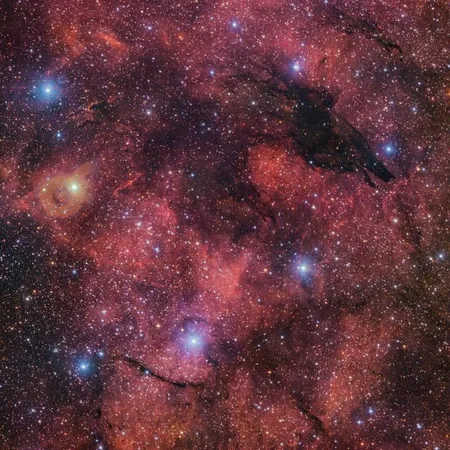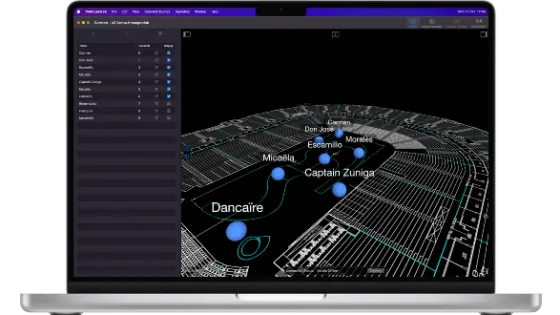
Stunning New Image of the 'Dark Wolf Nebula' Captivates Astronomers and Sky Watchers Alike
2024-11-01
Author: Siti
Stunning New Image of the 'Dark Wolf Nebula' Captivates Astronomers and Sky Watchers Alike
In a breathtaking revelation, the European Southern Observatory (ESO) has unveiled an image of a captivating dark nebula, which strikingly resembles the outline of a wolf against a vibrant cosmic backdrop. This stunning celestial phenomenon has been aptly dubbed the Dark Wolf Nebula.
Captured in an astounding 283-million-pixel resolution by the VLT Survey Telescope (VST) at ESO’s Paranal Observatory in the Atacama Desert, Chile, this new image showcases the nebula's captivating silhouette, which is situated roughly 5,300 light-years away from Earth, within the constellation Scorpius—an area known for its richness in star formation.
The image covers a section of the sky approximately four times the size of a full Moon, yet intriguingly, it is merely a fragment of a larger nebula designated as Gum 55—a substantial region teeming with cosmic activity.
What Are Dark Nebulae and Their Cosmic Significance?
Dark nebulae such as the Dark Wolf are intriguing features in the universe. These cold clouds of cosmic dust are so dense that they block the light from stars and other celestial bodies behind them. Unlike their colorful and luminous counterparts, dark nebulae do not emit visible light; instead, they absorb it, allowing only longer wavelengths, such as infrared light, to pass through.
The study of these enigmatic clouds is crucial for astronomers, as they often harbor nascent stars, offering insight into the processes of star formation. The Dark Wolf Nebula, in particular, contrasts sharply with the luminous surrounding star-forming clouds, which radiate beautiful reddish hues—energized by intense UV radiation emitted from the newly formed stars hidden within.
The Artistic Capture of the Southern Skies
While some dark nebulae, like the Coalsack Nebula, can be spotted with the naked eye and hold cultural significance for various First Nations, the Dark Wolf remains elusive to casual stargazers. The picture was meticulously constructed from various exposures taken at different times, with specific filters allowing only certain colors of light to penetrate, leading to the creation of this comprehensive image.
The VLT Survey Telescope, a collaborative endeavor involving the National Institute for Astrophysics in Italy (INAF) and hosted at ESO's state-of-the-art observatory, employs advanced technologies to map the southern sky in visible light. This particular observation is part of the VST Photometric Hα Survey of the Southern Galactic Plane and Bulge (VPHAS+), which has assessed an impressive 500 million celestial objects in our Milky Way.
As astronomers continue to explore the cosmos, the Dark Wolf Nebula serves as a stunning reminder of the beauty and complexity of our universe—evoking a sense of wonder that captivates both professionals and amateurs alike. Keep your telescopes ready, because the cosmos has even more mysteries waiting to be uncovered!




 Brasil (PT)
Brasil (PT)
 Canada (EN)
Canada (EN)
 Chile (ES)
Chile (ES)
 España (ES)
España (ES)
 France (FR)
France (FR)
 Hong Kong (EN)
Hong Kong (EN)
 Italia (IT)
Italia (IT)
 日本 (JA)
日本 (JA)
 Magyarország (HU)
Magyarország (HU)
 Norge (NO)
Norge (NO)
 Polska (PL)
Polska (PL)
 Schweiz (DE)
Schweiz (DE)
 Singapore (EN)
Singapore (EN)
 Sverige (SV)
Sverige (SV)
 Suomi (FI)
Suomi (FI)
 Türkiye (TR)
Türkiye (TR)